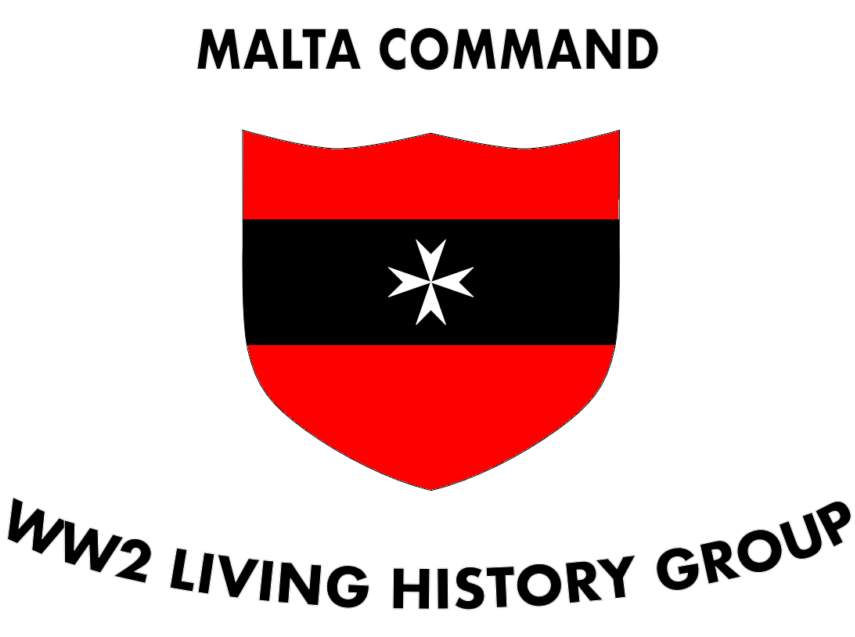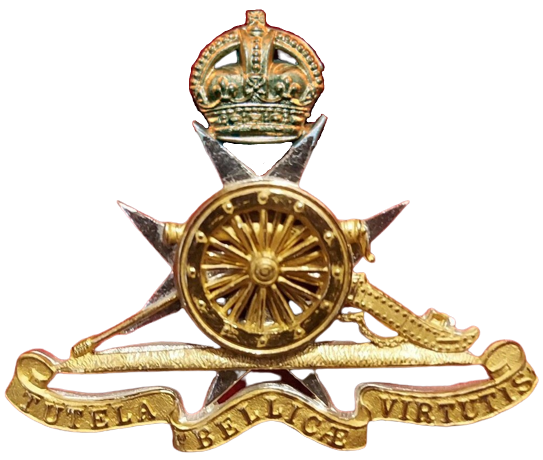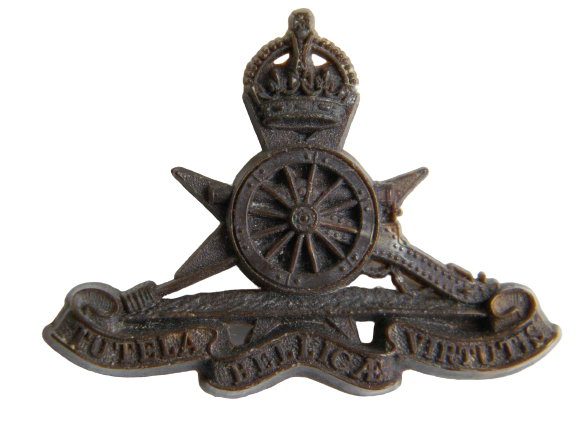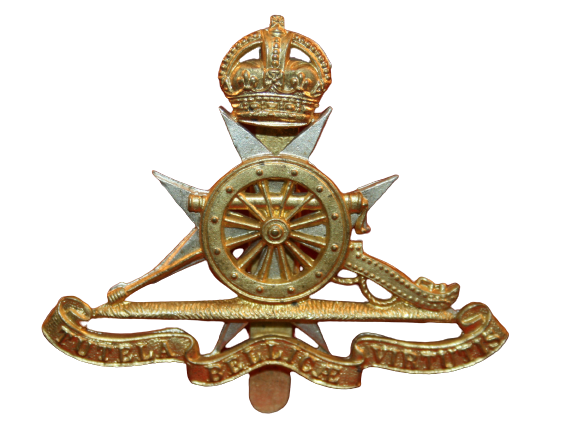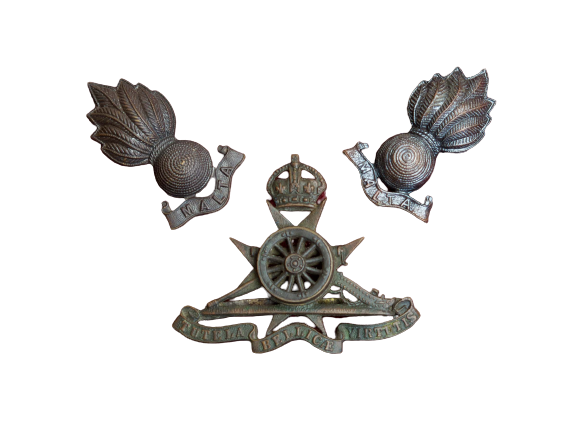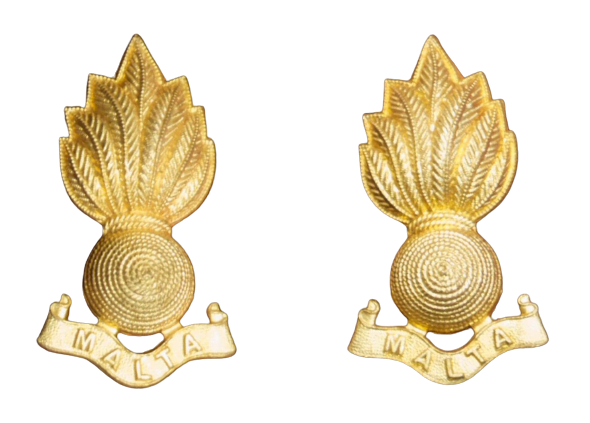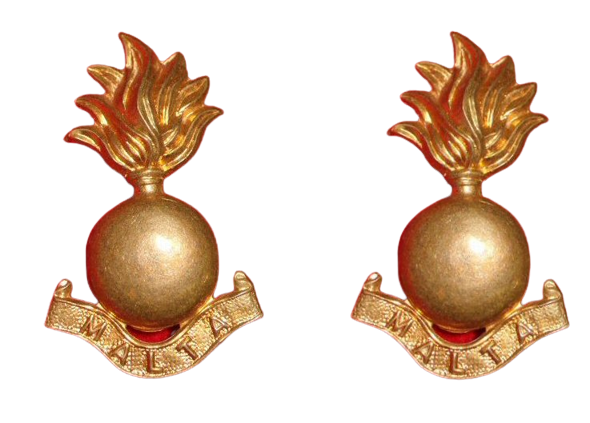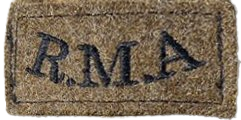The badge worn by members of the Royal Malta Artillery during the Second World War consists of a 12 pounder Victorian field gun superimposed on an ‘Eight-pointed’ cross, or as better known, a Maltese Cross. Below is a scroll with ‘TUTELA BELLICÆ VIRTUTIS’, meaning ‘Custodian of Military Prowess’, the whole topped by a Tudor or King’s Crown.
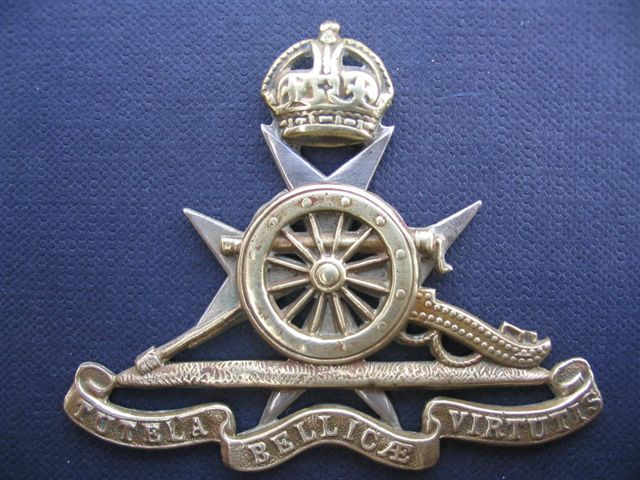
History Of the Badge
The badge knows its origin to the long connection with artillery regiments that manned the guns of our fortifications to defend Malta from any seaborne attacks and later those from the air, from which the present Armed Forces of Malta originates.
During the later years of the presence of the Order of St. John in Malta, the guns in costal forts and on the fortifications were manned by a unit of their armed forces known as the ‘Battaglione di Artilleria’ (the Artillery Battalion). Therefore, the ‘eight pointed cross’ represents Malta’s historical ties with the Order of St. John.
When the British took possession of Malta in 1800, the need to enlist Gunners for the defence of the island was evident. Although there were two artillery units raised in the early years and the later Maltese infantry regiments excelled in gunnery practice, the first regular Maltese artillery regiment within the British Army was the Royal Malta Fencible Artillery in 1861. In 1889, the Regiment was designated as the Royal Malta Artillery until being disbanded in 1972. As the first badge of the Royal Malta Fencible Artillery appropriately carried the field gun as part of its device, the same gun continued to be included in later badges.
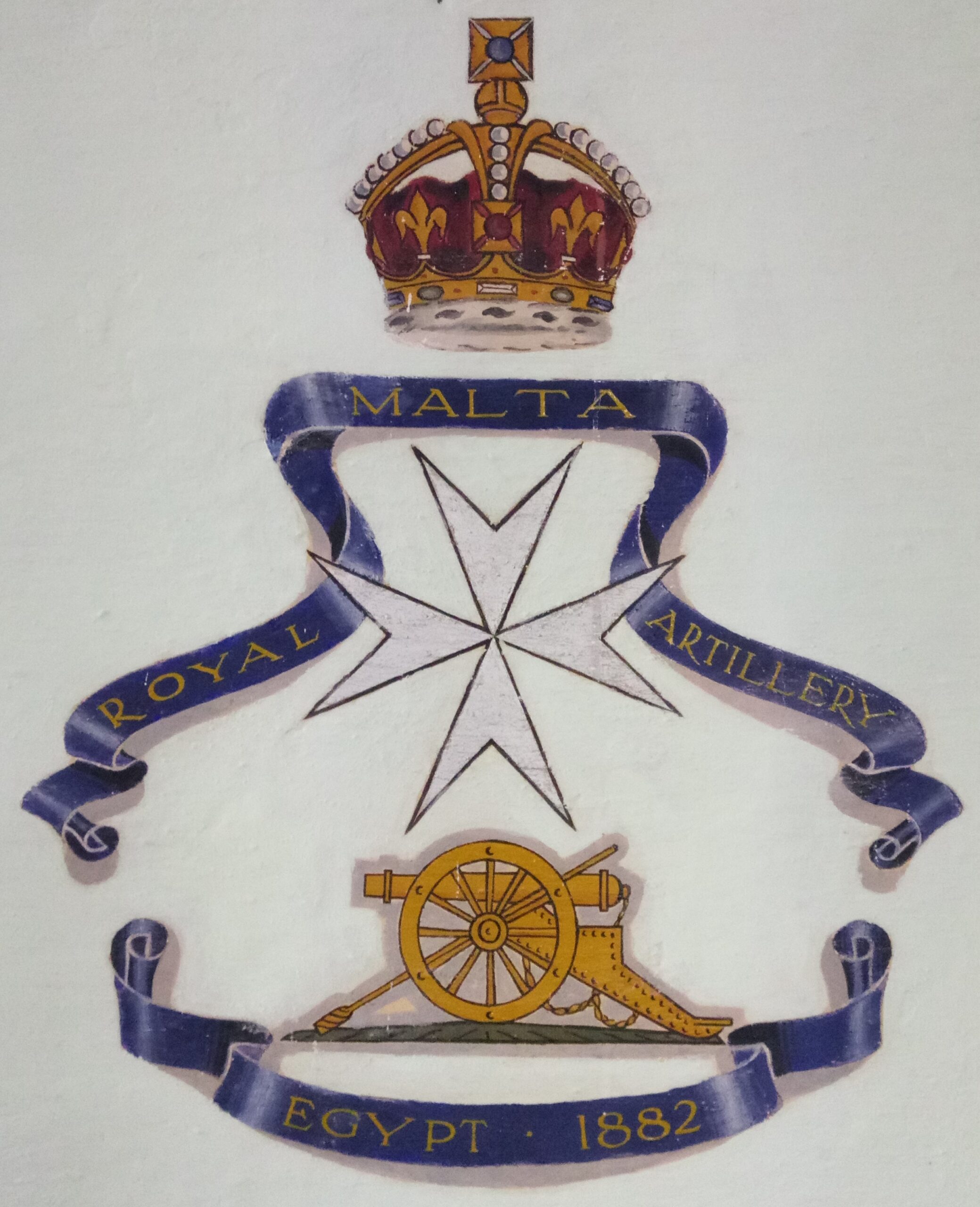
The badge worn by the Maltese Gunners during those turbulent years, knows its origin when the Royal Malta Artillery was given a new cap badge in 1937, described as “A gun superimposed upon the Maltese Cross, below a scroll inscribed TUTELA BELLICÆ VIRTUTIS, the whole ensigned by the Crown”. The crown represents royal sovereignty. After the demise of King George VI in 1952 and the succession of Queen Elizabeth II as the British monarch in the following year, the crown was changed from the Tudor (or King’s) to St. Edward’s Crown (or Queen’s). When Malta became a Republic in 1974, the crown was removed from the badge.
Credit for the design of the badge goes to Captain Joseph A. Sammut RMA, later Lieutenant-Colonel of the Regiment and the sketches despatched to Messers J.R. Gaunt Ltd. were executed by Captain, later Major Lewis E. Ganado RMA. The motto was adapted by the Regimental Chaplain Reverend Albert E. Farrugias Bugeja D.D.
A number of versions of the 1937-1952 pattern badge were worn, and are as follows:
Other Ranks’ -Cap badge, brass and white metal (bi-metal), large.
Side Cap and beret badge, all brass, small.
Officers’ -Cap badge, gilded for No. 1 Dress, large.
Cap badge, bronze for Service Dress, large.
Side cap, bullion embroidered.
Officers and Warrant Officers – Cap badge, Bakelite, large, ‘war economy’

Slide through the various cap badges, collar badges and shoulder titles and get a visual glimpse
Article researched by Denis A. Darmanin
Sources and acknowledgements:
– Author’s archives
– History of The Royal Malta Artillery, Vol. 1, (1800-1939), Brigadier A. Samut-Tagliaferro, Malta1974.
